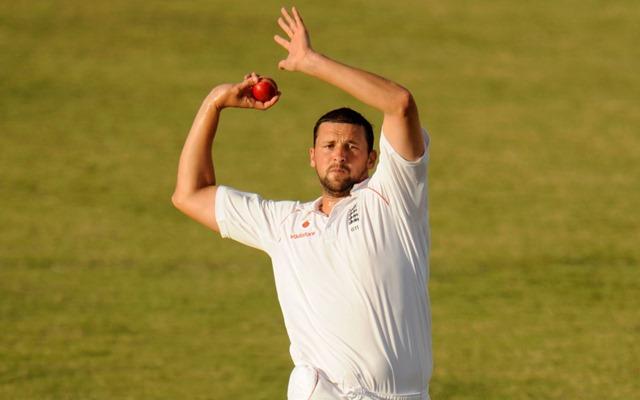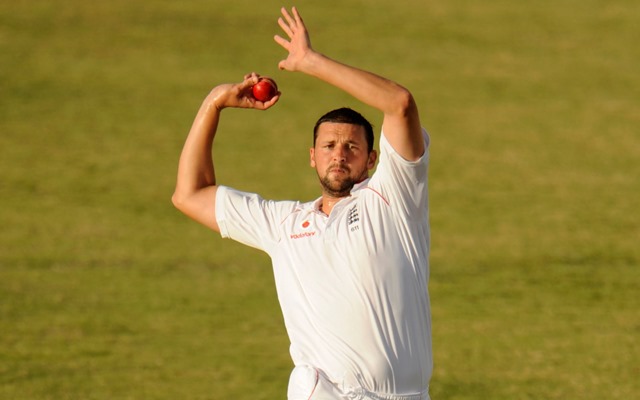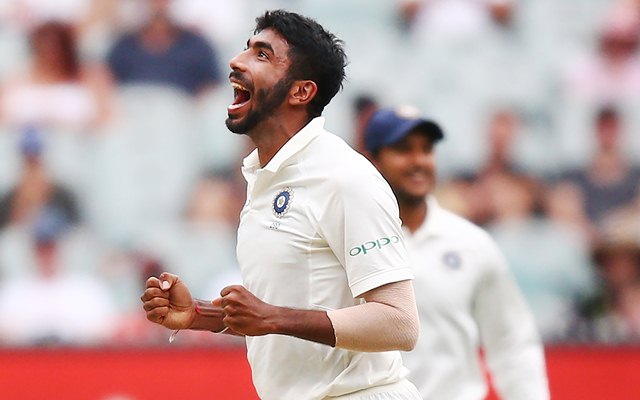7 Best slower ball wickets by pacers in International Cricket
Here are some of the best slower balls delivered by the fast bowlers in International Cricket.
View : 25.7K
2 Min Read



A year ago, Lasith Malinga delivered a perfect yorker on the last ball of the IPL final to seal 4th title for the Mumbai Indians (MI) by a 1-run margin. Rohit Sharma’s plan to deceive Shardul Thakur worked big time for the Mumbai franchise thanks to Malinga’s execution. The slower one has come to the rescue of the fast bowlers on many occasions. Be it during a crunch situation in the death overs of a limited-overs game or during a dry spell on a flat track in Test cricket.
Here are some of the best slower balls delivered by the fast bowlers in International Cricket:
7. Chris Cairns to Chris Read in 1999
New Zealand took on England at the Lord’s in the 2nd game of the 4-match Test series during their 1999 tour of England. The home side were 1-0 up in the series having won the first Test in Birmingham. Chris Cairns played a key role with the ball on the opening day as his 6-wicket haul bundled England out for only 186 despite two of their top three scoring over fifty runs.
Matt Horne’s century ensured New Zealand got a big first-innings lead and won by 9 wickets capitalizing on that. During his 6-wicket haul, Cairns got better of wicketkeeper Chris Read with a brilliant slower ball. His loopy slower one at 110 KMPH deceived Read who ducked at the point of release expecting it to be a bouncer. The delivery went through Read’s legs and hit the middle stump on the full.
6. Naved-ul-Hasan to Virender Sehwag in 2004
The duel between the Indian opener Virender Sehwag and the Pakistan pacer Naved-ul-Hasan is well known to the cricket fans on either side of the border. The aggressive batsman often tried to get under Naved’s skin who was successful in claiming his wicket on most occasions. Sehwag was dismissed by Naved on as many as six instances in ODIs but only once in the longer format.
The two players first clashed off in the first game of the 5-match ODI series hosted by Pakistan in 2004. India raced to 79/1 by end of the 10th over before Naved was brought into the attack. Naved-ul-Hasan struggled with landing his front-foot as he ended up bowling as many as five no-balls in his first over including three successful bloopers before his first legal ball.
Sehwag made merry of Naved’s confidence as he smashed four boundaries in that over to bring up his fifty in 41 balls. Naved’s 3rd over began with a maximum over the long-on fence from Sehwag who by then, raced to 82 in 56 with India cruising at 142/1 in only 14.1 overs. Naved, who already conceded 38 runs in just 2.1 overs, decided to bowl a slow yorker on leg-stump which deceived Sehwag who was looking for another big hit.
5. Aaqib Javed to Mark Greatbatch in 1992
An injury to John Wright in the 1992 World Cup helped Mark Greatbatch walk into the side and seal his place in the XI. Greatbatch was asked to open the batting despite not been in that role in ODI format before the tournament. The left-hander smashed 68 from 60 balls in his first game against South Africa for which he was named player of the match for his performance and continued his aggressive approach.
Greatbatch struck two fifties and his strike rates in his next four games read 93.75, 81.81, 94.8 and 94.59 respectively. In the last league match, he scored only 42 off 67 balls against Pakistan as no other player among NZ’s top eight batters reached double digits. He was continued as an opener in the semi-final against Pakistan where he opened alongside John Wright who returned fit for the big match.
Neither of Greatbatch and Wright got going except for a couple of boundaries. In the 5th over, Greatbatch smashed Wasim Akram for a six over backward point and one more maximum coming down the ground to Aaqib Javed in the 8th over. The left-hander tried same on the next ball but Aaqib’s slower one struck Greatbatch’s pad. The 10th over bowled by Aaqib began with an even better slower ball which got Greatbatch beaten who tried to advance down the ground.
4. Brett Lee to Brian Lara in 2005
Brian Lara enjoyed batting against Australia especially in Test cricket as he smashed nine centuries against them. He scored close to 3000 runs against the Aussies in 31 Test matches. The left-handed batsman was a headache to the Australians even while the West Indies team was on the decline in the early part of the 2000s. Lara was often seen in lone battles while his team kept collapsing. The 2005-06 tour of Australia turned out to be his last battle with the Aussies in the longer format.
Brisbane hosted the first game of the 3-match Test series between the two teams. Ricky Ponting’s 149-run knock helped the home side to end up with 435 shortly after the Lunch on the 2nd day. West Indies started off well in their first innings thanks to a half-century from the opener Devon Smith. He shared a 50+ stand along with skipper Brian Lara who walked to bat at No.4. Lara tried to dominate Shane Warne smashing him for a four and a six after the Tea interval.
Brett Lee came in for a brief spell in the 34th over after conceding as many as 39 runs in his first six overs. In the 38th over, Lara pulled one in the bowling of Lee to move to 30 as the 3rd wicket partnership reached 60 runs. Lee, out of ideas, tried an in-dipping slower one to Lara, which to the surprise of the West Indian, struck on pads and was adjudged LBW. Brett Lee’s slower one was recorded at 118 KMPH who was known to be bowling at 140 KMPH at an average.
3. Steve Harmison to Michael Clarke in 2005

Australia took 1-0 lead in the 2005 Ashes hosted by England following a comfortable win at the Lord’s. England fought back in Birmingham where they posted 407 in their first innings and later took a lead of 99. Andrew Flintoff’s quick-fire 73 helped the home side to set up a target of 282 in front of the Aussies. The visiting side began the chase on a good note with a 47-run opening partnership.
However, the Australians went down from 47/0 to 137/7 in the space of 22.1 overs. Michael Clarke was the last recognized batsman and had Shane Warne to partner him. The duo had to play out 9.4 overs before the stumps on 3rd day of the game. The duo ensured they finished the day unbeaten and also scored runs. They added 37 runs before the final over of the day’s play was bowled by Steve Harmison.
On the fourth ball of the final over of the day, Harmison bowled a slower ball on the middle stump which completely fooled Clarke. His stumps were shattered at the close of day’s play as the Aussies were 8 wickets down at the score of 175. Interestingly, it was one of the two wickets picked by Harmison in the whole game. The other one was the last wicket of the game to dismiss Michael Kasprowicz and seal a 2-run victory.
👤 Steve Harmison
🏏 Wicket of Michael Clarke
🗓 2005Best slower ball you've ever seen?#Edgbaston #FortressEdgbaston #Ashes pic.twitter.com/DVPChl7zmP
— Edgbaston (@Edgbaston) July 5, 2019
2. Dwayne Bravo to Yuvraj Singh in 2006
India extended their winning streak while chasing in ODI cricket to 17 following their victory in the first game of the 5-match ODI series in West Indies. Indian skipper Rahul Dravid starred in helping India take 1-0 lead with a brilliant century in Jamaica. India fancied their chances to take their winning streak to 18 after a collective bowling performance in the 2nd ODI which was also hosted by Sabina Park.
West Indies ended up with 198/9 in their 50 overs all thanks to Ramnaresh Sarwan’s unbeaten 98 after coming to bat in the 2nd over. The home side were six wickets down for 105 in the 36th over at one stage but made a strong finish. India, at one stage, lost seven wickets for 134 by 39th over of their chase. But Yuvraj Singh fought a lone battle with a couple of small partnerships.
Yuvraj needed to chase 10 runs from the five balls against Dwayne Bravo with only one wicket in hand. Yuvi, who was batting on 85 off 118, found successive boundaries as India stood only two runs away from yet another ODI win while chasing. Bravo then bowled a slower one at 117 KMPH aiming bottom of the leg-stump. Yuvraj misread the pace and failed to make a connection as India lost the game by one run.
1. Jasprit Bumrah to Shaun Marsh in 2018

Though there was some exciting action during Test series between Australia and India in 2018-19, it was the Melbourne pitch that held limelight. The MCG was due to host the 3rd Test when the series was levelled 1-1. The talks around Melbourne pitch were mainly due to flat nature in the previous Boxing Day Tests. India batted out 170 overs in their first innings but made only 443/7 at 2.61 runs an over.
India got three wickets in the first hour of the 3rd morning but Shaun Marsh and Travis Head began to show some resilience. Jasprit Bumrah was bowling brilliantly without much success as lunch break approached. Bumrah took the wicket of Marcus Harris in his first spell of 8 overs spread across two days. He was brought back for a spell of three overs before the lunch break against the left-handed batting pair.
Just before Bumrah bowled the last ball of the session, Rohit Sharma, fielding at mid-off, walked up to the former with a suggestion. Rohit told Bumrah to try for a slower ball which he is known for in the limited-overs. Short of ideas on a flattened track, Bumrah went for a slower yorker that dipped into Marsh’s foot and was caught plumb in front. The ball from the pacer was recorded at 113 KMPH where his average speed would be around 140 KMPH.
reminded me of Jasprit Bumrah' stunning slower ball to dismiss Shaun Marsh at the stroke of lunch. Amazing amazing..😍pic.twitter.com/mSFfuxvm9u https://t.co/bfoCELlefj
— TomChandler⚓ (@SooraJ1911) April 8, 2020
Download Our App